- Welcome to Accuthermo Technology Corp.
- A Total Thermal Solution Provider
Sensors & Transmitters
Category Name: Sensors Transmitters
-
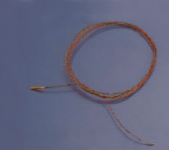
- THERMISTOR SPECIFICATIONS
- This specification defines ratings, dimension, insulation, climatic tests and mechanical characteristics for the 2.252 KΩ type thermistor.
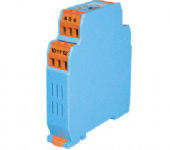
- ISC 2-Channel Isolated Universal Signal Converter/Conditioner/Isolator
- •The unique Math function.
PV1,PV2 is the measuring value of Channel 1 and Channel 2 separately. A,B,C is a constant set by user.
•The unique High/Low comparison output.
The output 1 can scale to PV1 or PV2 whichever is higher/lower than the other.
•Programmable for various input signals and measuring range.
•Configurable without Power Connected.
•Full 3-way isolation for 1500 Vrms.
•DIN rail mount.
•Dual channel Input.
Resistance thermometer (Pt100)
Thermocouple (J,K,T,E,B,R,S,N,C)
Voltage/Current transmitter (mV/V/mA)
•Dual 0/4 to 20 mA or 0~10V analogue output (ISC-D).
•RS485 communication interface with Modbus RTU protocol (ISC-C).
•Fault signal on sensor break presettable.
.jpg)
- ISD 2 Independent Channels Isolated Universal Signal Converter/Conditioner/Isolator
- •Two independent input channels for various input signals and measuring range
•Configurable without Power Connected.
•Full 3-way isolation for 1500 Vrms.
•DIN rail mount.
•Dual channel Input:
Resistance thermometer (Pt100)
Thermocouple (J,K,T,E,B,R,S,N,C)
Voltage/Current transmitter (mV/V/mA)
•Dual 0/4 to 20 mA or 0~10V analogue output (ISD-D).
•RS485 communication interface with Modbus RTU protocol (ISD-C).
•Fault signal on sensor break presettable.
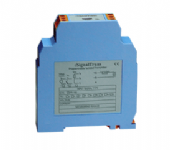
- IST-D Microprocessor Based Programmable lsolated Signal Transmitter
- DIN rail mount
Programmable for various input signals and measuring range
Configurable without Power Connected
3750 Vrms isolation between input and output
Input:
Resistance thermometer (PT100)
Thermocouple (J,K,T,E,B,R,S,N,C)
Voltage/Current transmitter (mV/V/mA)
Output :
2-wire loop-power technology, 4 to 20 mA analog output.
Fault signal on sensor break presettable.
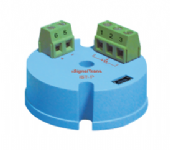
- IST-P Isolated 3 wire potentiometer transmitter
- Up to 15 User defined linearization points available.
The user linearization feature allows the volume of a tank’s contents to be calculated from the height of the material in that container. Up to 15 linearization points can be defined by user in the measurement range.
Configurable without Power Connected.
3750 Vrms isolation between input and output.
2-wire loop-power technology, 4 to 20 mA analogue output.
Fault signal on sensor break presettable.
Accept 200 ~ 60K ohms 3 wire Potentiometer input.
Head mount.

- IST-H Microprocessor Based Programmable lsolated Signal Transmitter
- Head mount
Programmable for various input signals and measuring range
Configurable without Power Connected
3750 Vrms isolation between input and output
Input:
Resistance thermometer (PT100)
Thermocouple (J,K,T,E,B,R,S,N,C)
Voltage/Current transmitter (mV/V/mA)
Output :
2-wire loop-power technology, 4 to 20 mA analog output.
Fault signal on sensor break presettable.
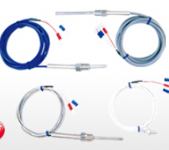
- Thermocouple & RTD Sensor
- Thermocouple :
The basic theory of the thermocouple effect is found from a consideration of the electrical and thermal transport properties of different metals. A measurement junction (this junction is formed of different metal) is exposed to the environment whose temperature is to be measured. The other "reference" junction (known as cold junction) are held at common. The "seeback voltage" then is proportional to the difference between junction temperatures. Certain standard configurations of thermocouples using specific metals (or alloys of metals) have been adoped, each type has its particular features. Such as range, linearity inertness to hostile environment sensitivity, and so on, and is chosen for specific applications accordingly.


.png)
.png)
.png)
.png)




